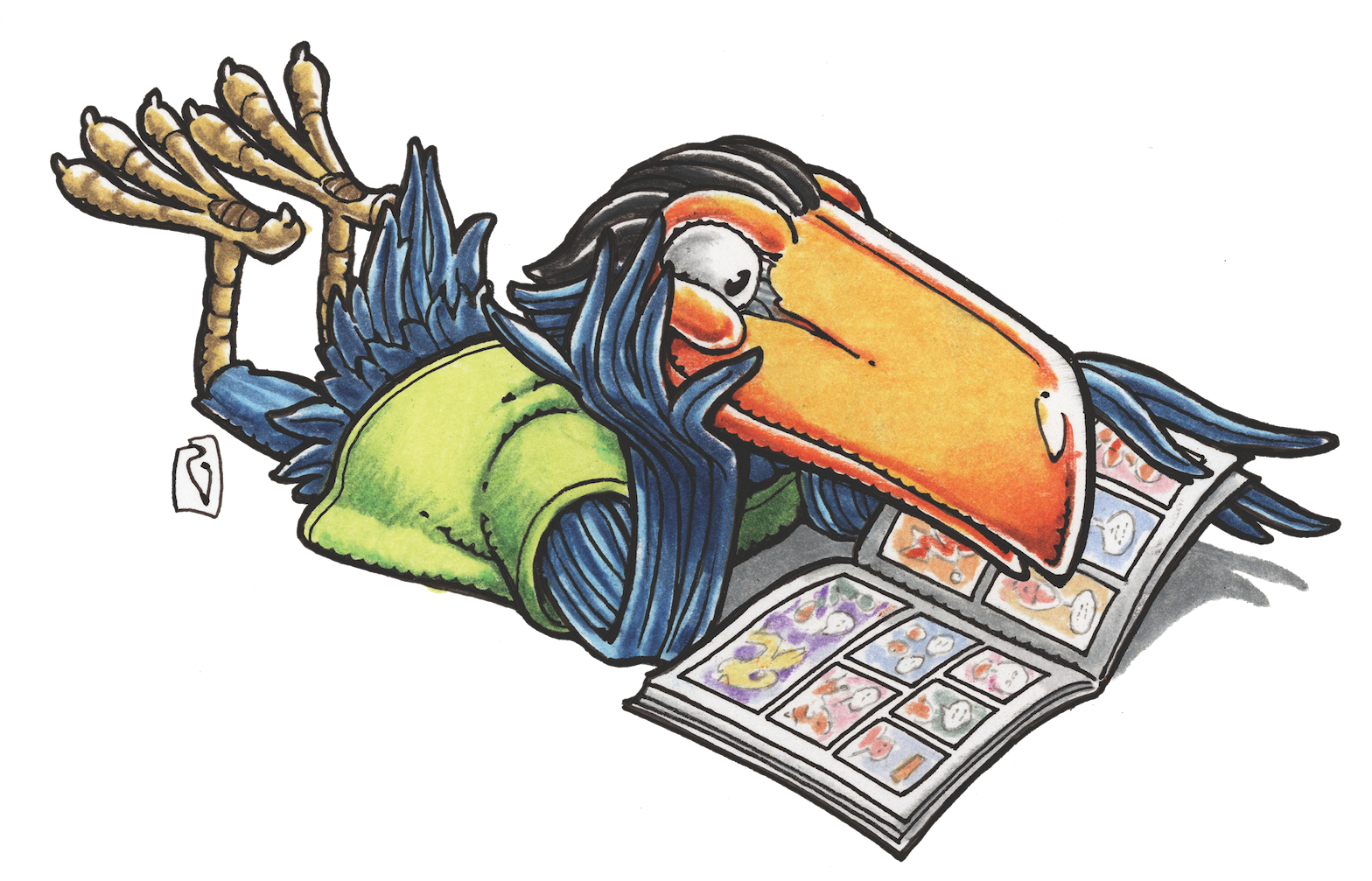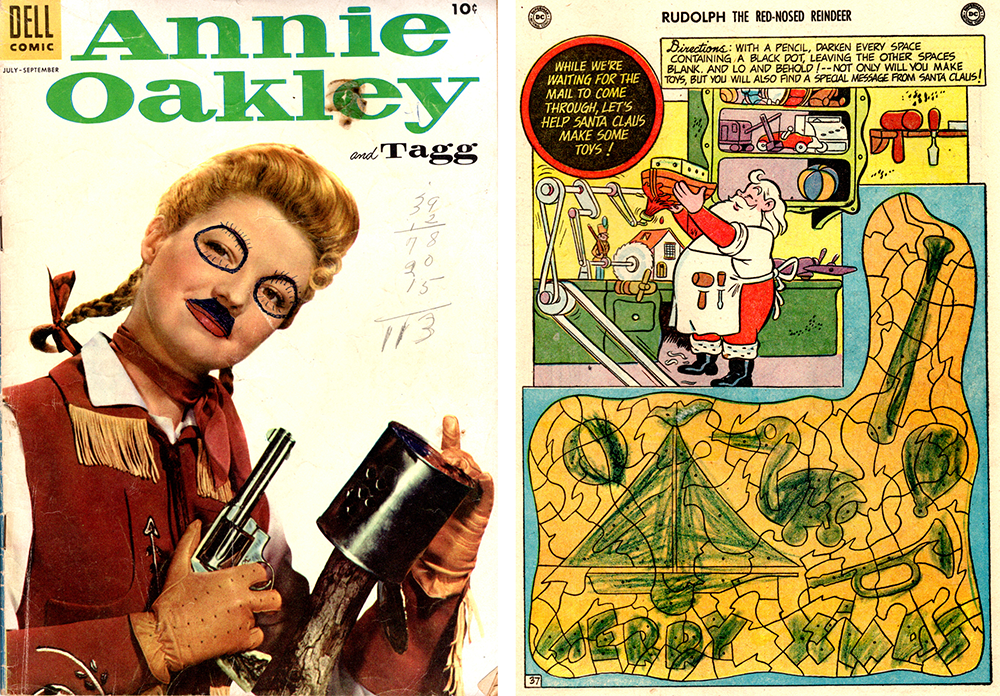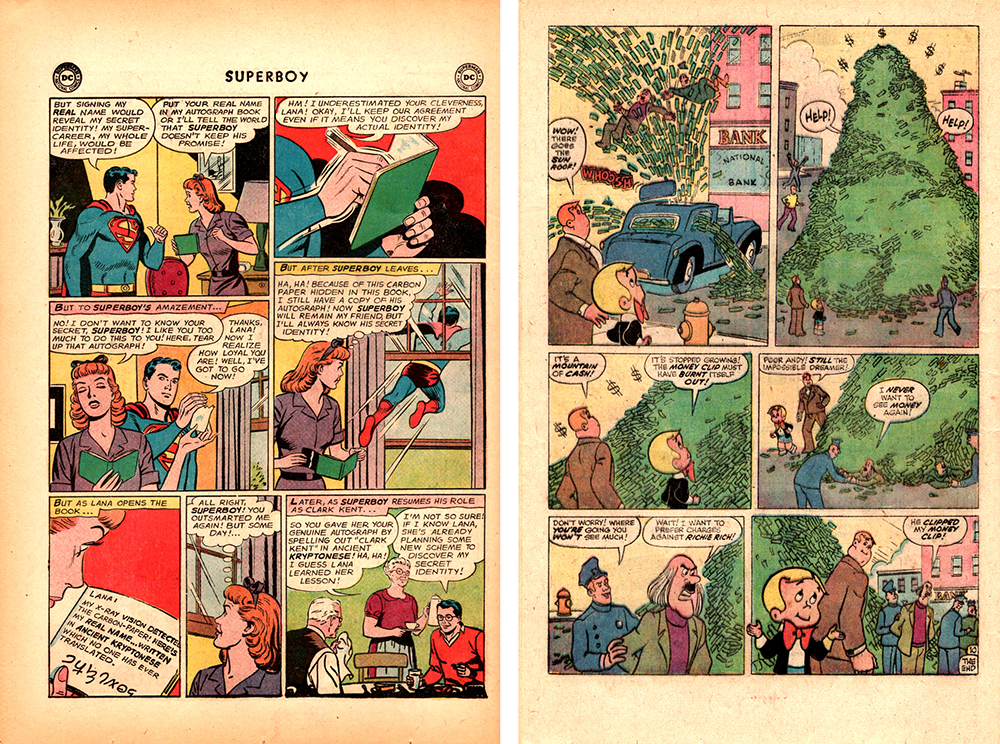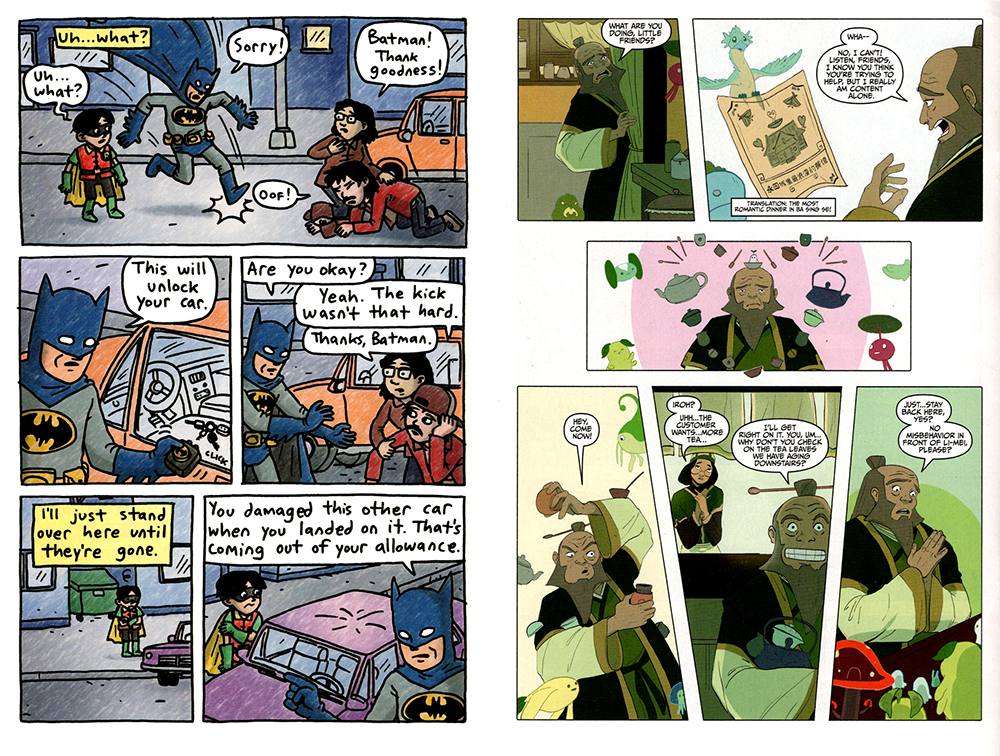MAGGIE’S WORLD BY MAGGIE THOMPSON
Maggie’s World 094: When Kids Own Comics

There I was in Barnes & Noble in August 2021, checking out what comics-adjacent publications might be lurking on the shelves for non-comics-obsessed children. In the newsstand area I saw Highlights and Jack and Jill—but not comics magazines.
It occurred to me that there might be comics in the “Humor” section and—yes!
Then, I saw a kid who looked to be about 5 years old. He was calling the attention of the adult he was with to that “Humor” area. And she said, “No, those are for big people.”
I took another look at what was shelved there, and it was a mix—a mix that, by the way, did include a number of collections of comic books aimed at young readers. Those were collections that the kid had just been told to avoid.
Among them was a paperback I think could be fun for new readers as well as for longtime collectors: The Best of Archie Comics vol. 1, with a cover proclaiming it to be “80th Anniversary Edition.” (Mind you, a closer look made it clear that this was the 70th Anniversary Edition sporting a new cover and copyright page. Nevertheless, it was keen, and I bet the boy would have enjoyed it.)

A Way In
In olden times (which is to say, “When I was a kid”—otherwise known as the late 1940s), I had a weekly allowance of 10¢. With that loot, I could go to the neighborhood newsstand and pick out one comic book: any dime comic book I wanted. I had the power. That comic book was mine to choose, mine to buy, mine to peruse, mine to own.
Ownership conferred proprietary interest and more. I owned the contents and the characters. Because of that, I knew I needed to learn to read to get the full benefit of the contents and characters. That, then, made me care even more about the stories and the characters—and the ability to read.
Learn to read with comic books is just what I did—and, yes, Mom helped with that. Then, seeing what I liked, Mom and Dad enabled that reading even more, buying me subscriptions to some of my favorites. Today’s collectors object to the subscription crease on such issues. As a kid, though, I was thrilled when a comic book came to me—me, personally—in the mail.
As time went on, I continued to look for work by my favorite creators. (The anonymous Carl Barks! The anonymous John Stanley!) And then I came across material aimed at older readers. (Hey! EC artists sign their work! Now I can recognize styles!)

Prices Changed
When comic books were a part of shopping routines (in grocery stores, as well as newsstands), the contents tended to stand on their own. Anthology titles carried a variety of complete short stories. An introductory caption might establish the setup, and the free-standing tale would wrap up within the issue. So that dime gave me a variety of complete adventures and gags. And I savored the beginning, middle, and end of each episode I owned.
DC’s Action Comics was an anthology comic book. It can provide a timeline of the investments involved over the years. (Yes, there were occasional bounces for special editions and oddball page counts. Nevertheless.)
- 1938 10¢
- 1961 12¢
- 1969 15¢
- 1971 25¢
- 1976 30¢
- 1977 35¢
- 1978 40¢
- 1980 50¢
- 1981 60¢
- 1983 75¢
- 1991 $1.00
- 1992 $1.25
- 1993 $1.50
- 1995 $1.95
- 2000 $1.99
- 2000 $2.25
- 2004 $2.50
- 2006 $2.99
- 2011 $3.99
- 2016 $2.99
- 2019 $3.99
- 2021 $4.99
By the way, according to the Internet, 10¢ in 1938 would have inflated to about $1.81 in 2021. So there have clearly been more factors involved in price changes than simple inflation. Advertising support did help keep prices low for some publishers—including DC. Someday, we can consider that (and the difference in what the ads-free Western Printing produced). For the time being, though, consider that, in the midst of all this, the direct market took form, starting with Phil Seuling’s November 1977 announcement of his Sea Gate direct-distribution project.
Phil’s goal was to get all published comic books into individual comics shops (via nonreturnable advance orders). That way, comics collectors could do one-stop shopping, not possible until then. And it worked, though comics collectors tended to focus on established favorites, rather than on entry-level introductions to comic book stories. These favorites became the focus of many comics shops. Which brings us to today.

Now . . .
Let’s consider another memory. Don and I were in a newsstand in 1966 not long after the Adam West Batman series had begun to air. We heard a little boy exclaim with delight, “I didn’t know they had a book about Batman!”
Spread the word. They have books about favorite characters: comics that kids today can own. To make that fact clear to folks who didn’t know, the comics industry itself began to make comics outreach into an event. In August 2001, retailer Joe Field suggested a Free Comic Book Day to introduce folks to comics shops—and the variety of comics they carry. And the next May 4, the idea became a reality.
When I recently paid a bill with a check, the staffer admired the Looney Tunes characters that were in the check design—but then said sadly, “Kids today wouldn’t know who that is.” It was Bugs Bunny.
But there is a Looney Tunes comic book, as well as theatrical and streaming content. There are even some comic-book subscriptions available today. For example, there’s at least one website via which customers can subscribe to such ongoing series as Justice League, Looney Tunes, Scooby-Doo, Where Are You?, Suicide Squad, Superman, and Wonder Woman.
But would kids even know about all those titles these days? How can we get comics to kids and kids to comics?
We’re back to that Barnes & Noble moment. Where can kids go these days to find comic books? A couple of opportunities come immediately to mind. Some public libraries—most?—offer books of comics. Some have trained librarians ready to suggest comics choices for young readers. Those readers can develop their interests by borrowing samples of the variety of comics offerings on library shelves.
There’s a bonus for kids lucky enough to have a comic book shop in their neighborhood. August 2021 brought Free Comic Book Day to such shops again. The choices among those treats made it simultaneously clear that not all comic books are for kids and that not all comic books these days carry “Done in One” stories. There’s a wide variety of comics out there, and the quantity can be confusing.
The happy situation, though, is that even kids who didn’t visit a shop in that event will find that comics shop staffers can help them find the fun they will most enjoy.
Because there are still comic books that kids can own. And that’s pretty great.
Maggie’s World by Maggie Thompson appears the second Tuesday of every month here on Toucan!